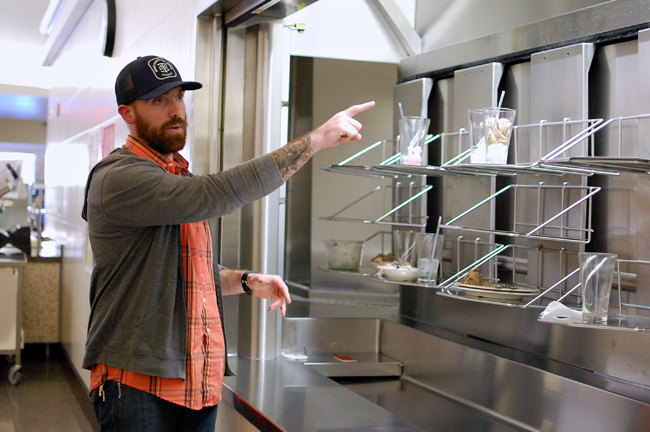The Division of Housing and Food Services disposed of about 330 tons of compostable material in its dining halls and markets in 2014, and DHFS is working to decrease the number each year, according to Hunter Mangrum, environmental specialist with DHFS.
DHFS serves an average of 28,000 meals a day, Mangrum said. DHFS found that hundreds of pounds of excess food are thrown out every day in the dining halls.
“In a perfect world, everyone is going to eat all of the food on their plate, but that’s not where we live,” Mangrum said. “By operating a food service unit operation on the scale that we do, waste is going to be a by-product. We want that to be as minimal as possible, but it’s going to be there.”
To collect data for the biannual study, DHFS and nutrition students sort through compost in the Kinsolving and J2 dining halls over a two-week period and weigh the amount of waste.
DHFS’ efforts are part of the University’s Zero Waste project, a plan to divert 90 percent of waste from the University by 2020. Zero Waste coordinator Jennifer Hobson said six percent of the University’s waste comes from recycling, trash and compost, which includes food.
“I think food is definitely a big part of [Zero Waste efforts],” Hobson said. “Even if you don’t buy food on campus, a lot of students are on campus all day, so they’re probably eating at least one [University] meal a day.”
DHFS officials have started several initiatives to curb food waste, including take-home food trays, food sampling and a promotional effort called the Clean Plate Club.
DHFS removed trays from its dining halls in 2008, almost halving their excess food waste, according to Mangrum. Kinsolving and J2 disposed of a estimated 111.94 tons of excess food waste in fall 2008. After banning trays, the same facilities disposed of 58.44 tons of food waste in fall 2009. In fall 2014, Kinsolving and J2 produced an estimated 43.59 tons of excess food waste.
Students often serve themselves large portion sizes in self-serve locations or are unsatisfied with the food’s taste, Mangrum said.
“I feel like I leave more food sometimes,” civil engineering freshman Christine Cheng said. “Sometimes it’ll look good, and I’ll take it and I’ll be like, ‘This doesn’t taste as good as I thought it would.’”
DHFS has calculated the correct amounts of food to make and serve, and the cooks and servers in DHFS’ units are trained to serve the correct amounts on each plate, Mangrum said.
If food is left over, the chefs look at what food can be repurposed or used again in the coming days. The food that cannot be repurposed is given to Angel House Soup Kitchen in Austin, which usually occurs on a weekly basis.
“We can count on having some amount of food to give to homeless shelters and other organizations in Austin,” Mangrum said. “But we can be progressive and proactive in how we not only cut [out] our waste — whether prepping and serving — but [in how] we can purchase less.”




















